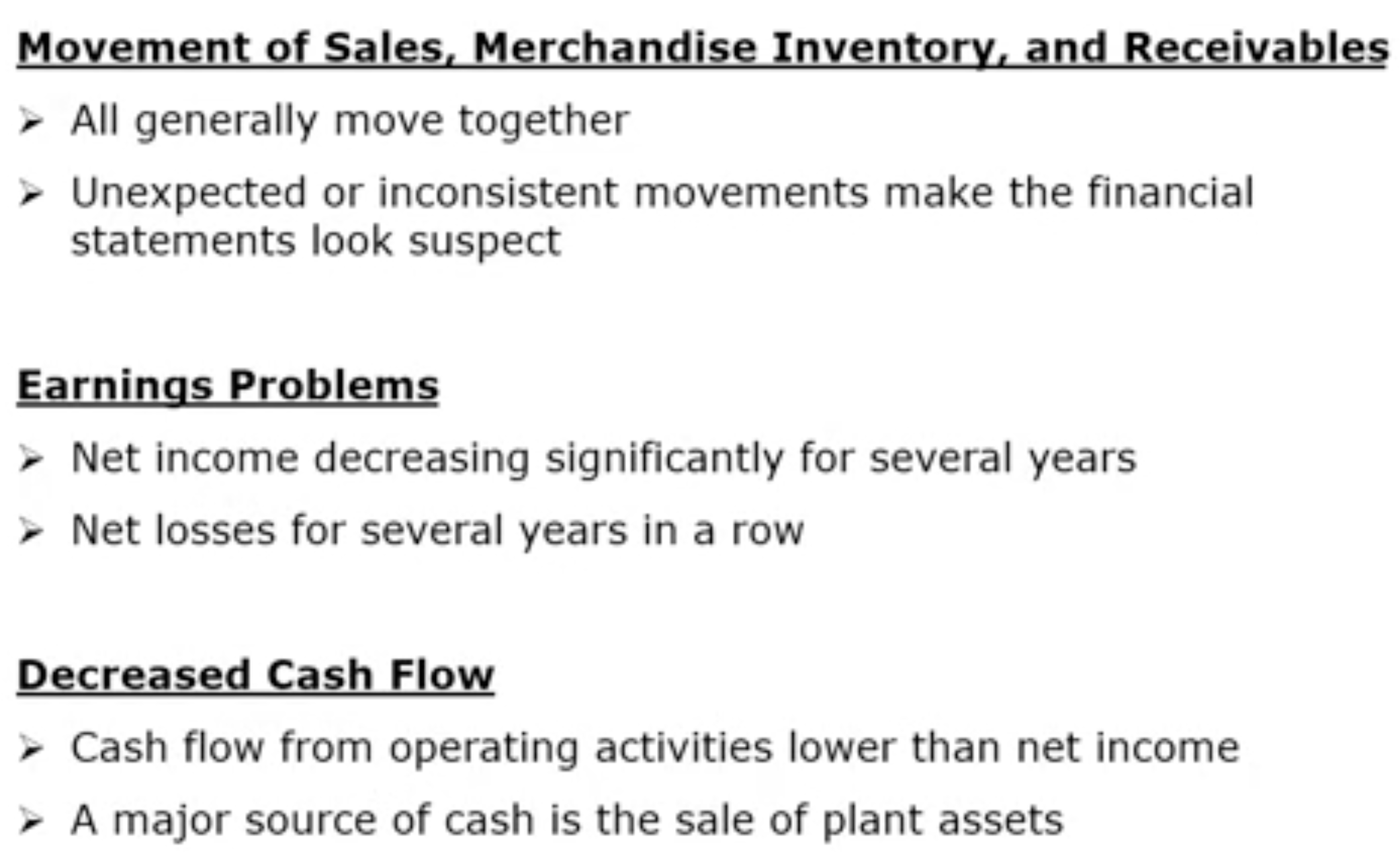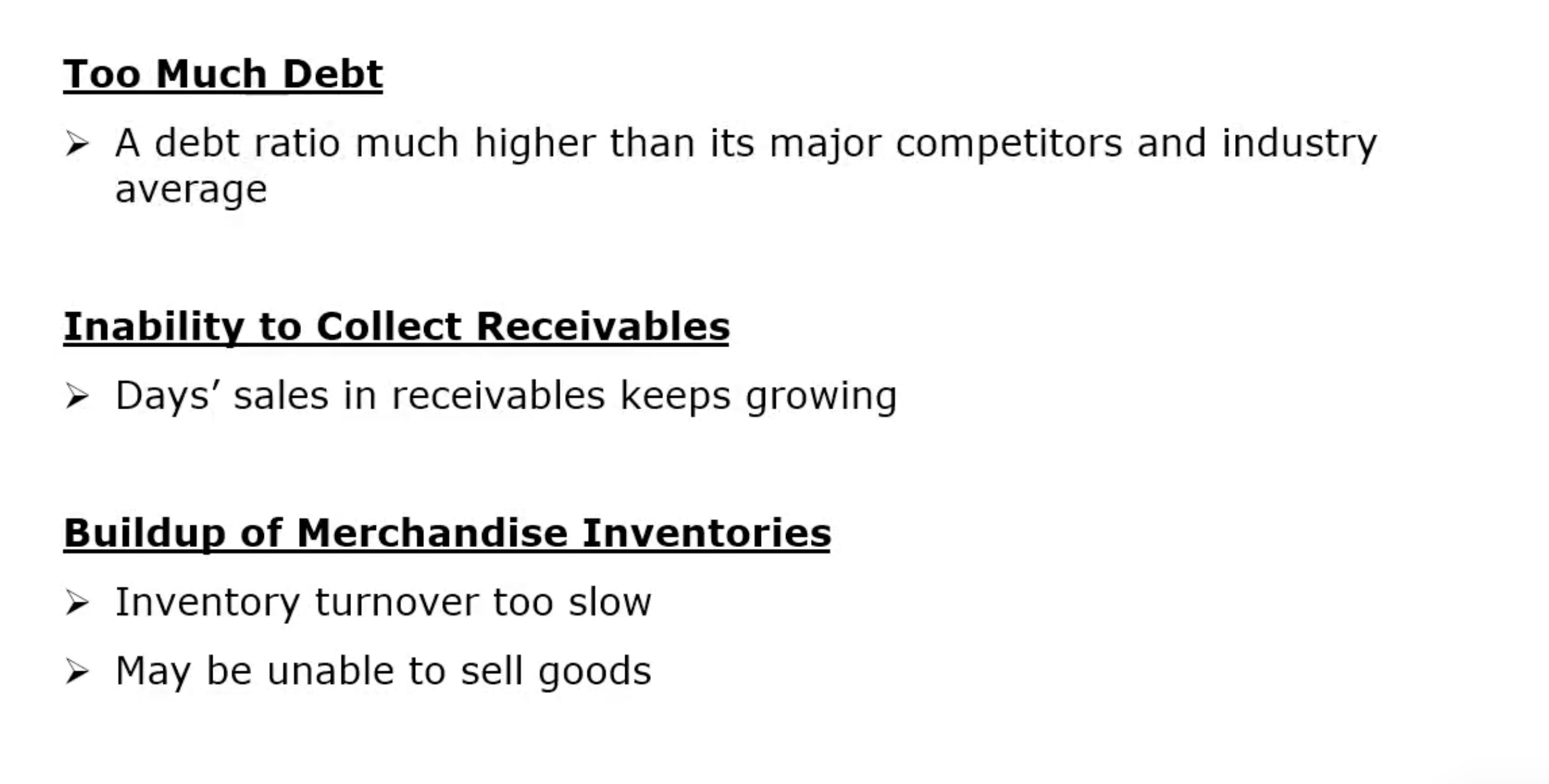Managerial Accounting Ch. C
1/47
There's no tags or description
Looks like no tags are added yet.
Name | Mastery | Learn | Test | Matching | Spaced |
|---|
No study sessions yet.
48 Terms
How are financial statements used to analyze a business: Purpose of analysis
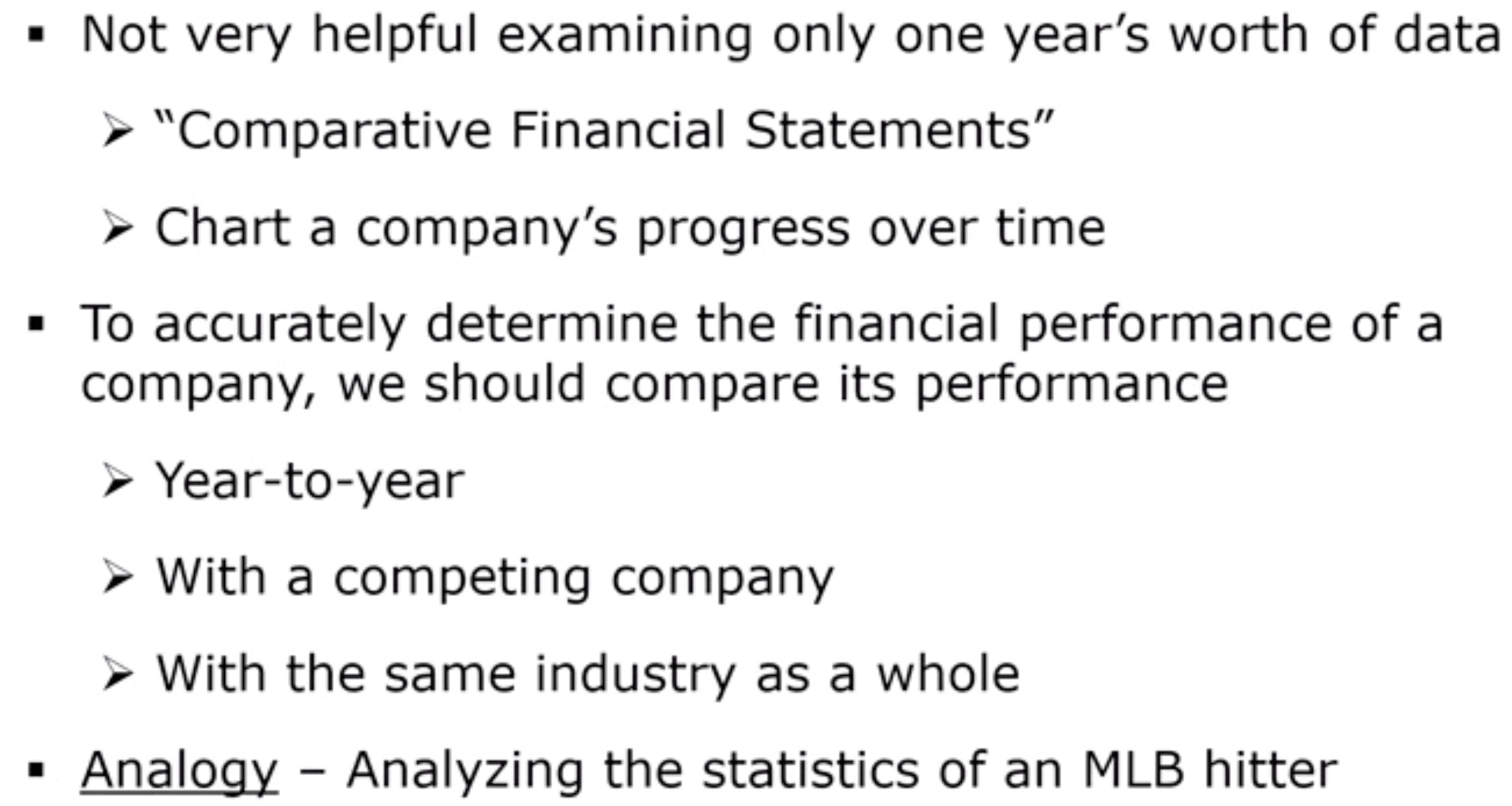
How are financial statements used to analyze a business: The 3 main ways to analyze financial statements
Horizontal analysis
vertical analysis
ratio analysis
How are financial statements used to analyze a business: Horizontal analysis
Year to year comparison
How are financial statements used to analyze a business: vertical analysis
provides a way to compare companies of different sizes
How are financial statements used to analyze a business: Ratio analysis
used most effectively to measure a company against other companies in the same industry
How are financial statements used to analyze a business: Corporate financial reports has to?
Final an annual reports each year known has 10k and quarterly reports known as 10-Q.
How are financial statements used to analyze a business: Annual report

How are financial statements used to analyze a business:

Let us explain to you what happened this past fiscal year.
How are financial statements used to analyze a business: MD&A
The section of the annual report that is intended to help investors understand the results of operations and the financial condition of the company. Might be a little biased and subjective.

How are financial statements used to analyze a business:

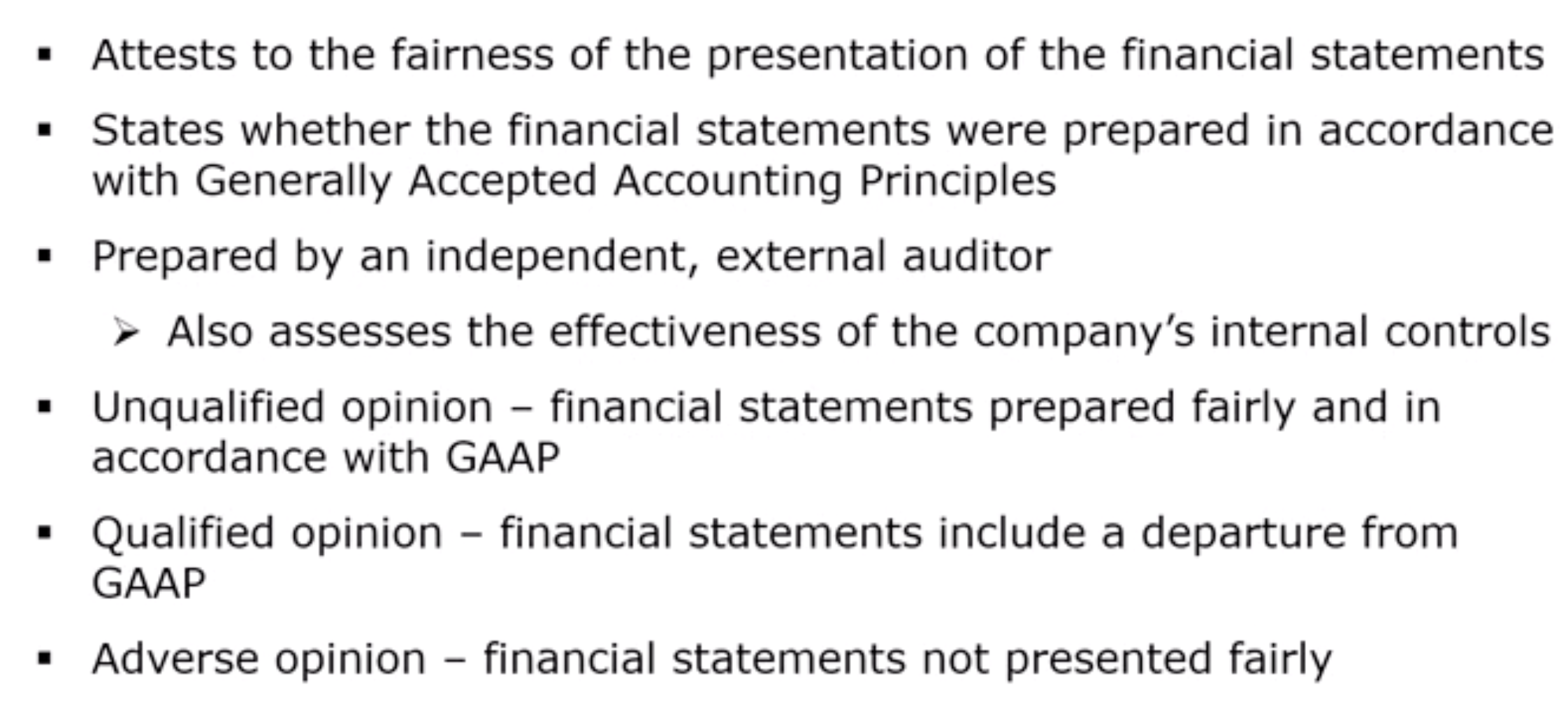
How are financial statements used to analyze a business: The balance sheet is often called a
Statement of financial position
How are financial statements used to analyze a business: The income statement is often called a
Statement of operations
How are financial statements used to analyze a business: Corporations are required to report multiple- period info for all financial statements

How are financial statements used to analyze a business: Notes to financial statements
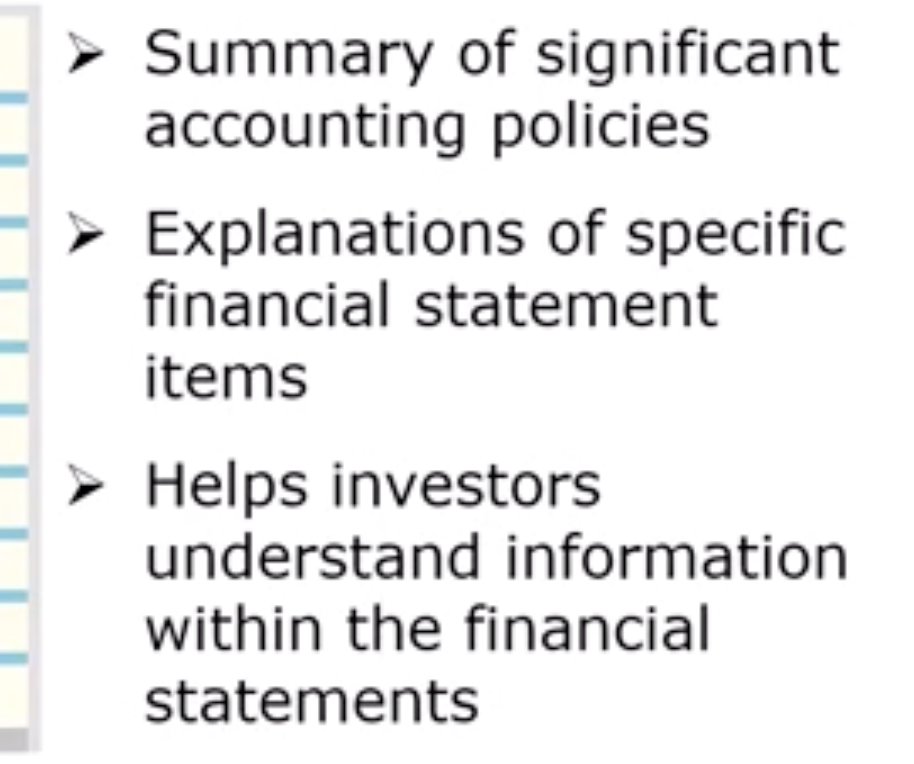
How are financial statements used to analyze a business:


How do we use horizontal analysis to analyze a business: Horizontal analysis
The study of percentage changes in comparative financial statements
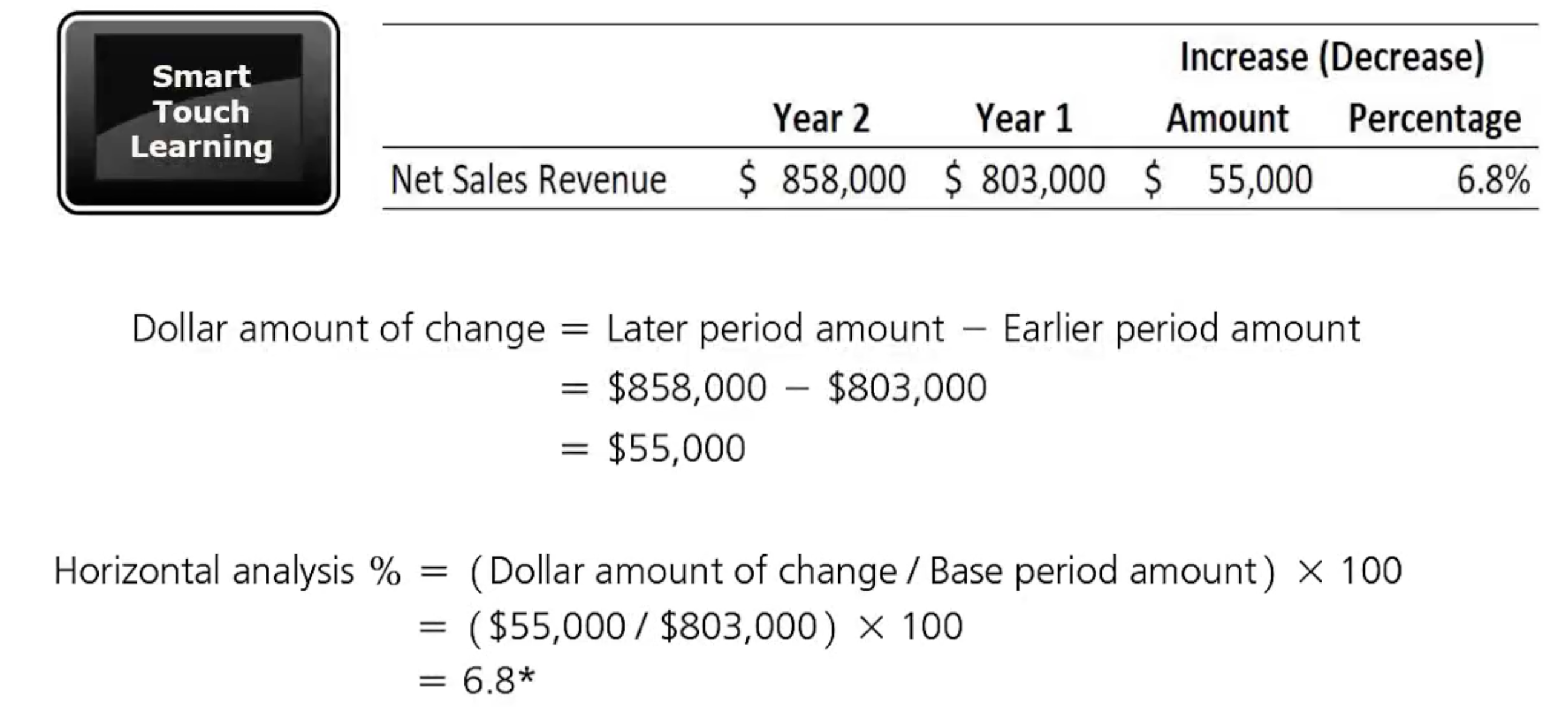
How do we use horizontal analysis to analyze a business: Trend analysis



How do we use horizontal analysis to analyze a business: Trend analysis example

How do we use horizontal analysis to analyze a business: diff between horizontal and trend analysis
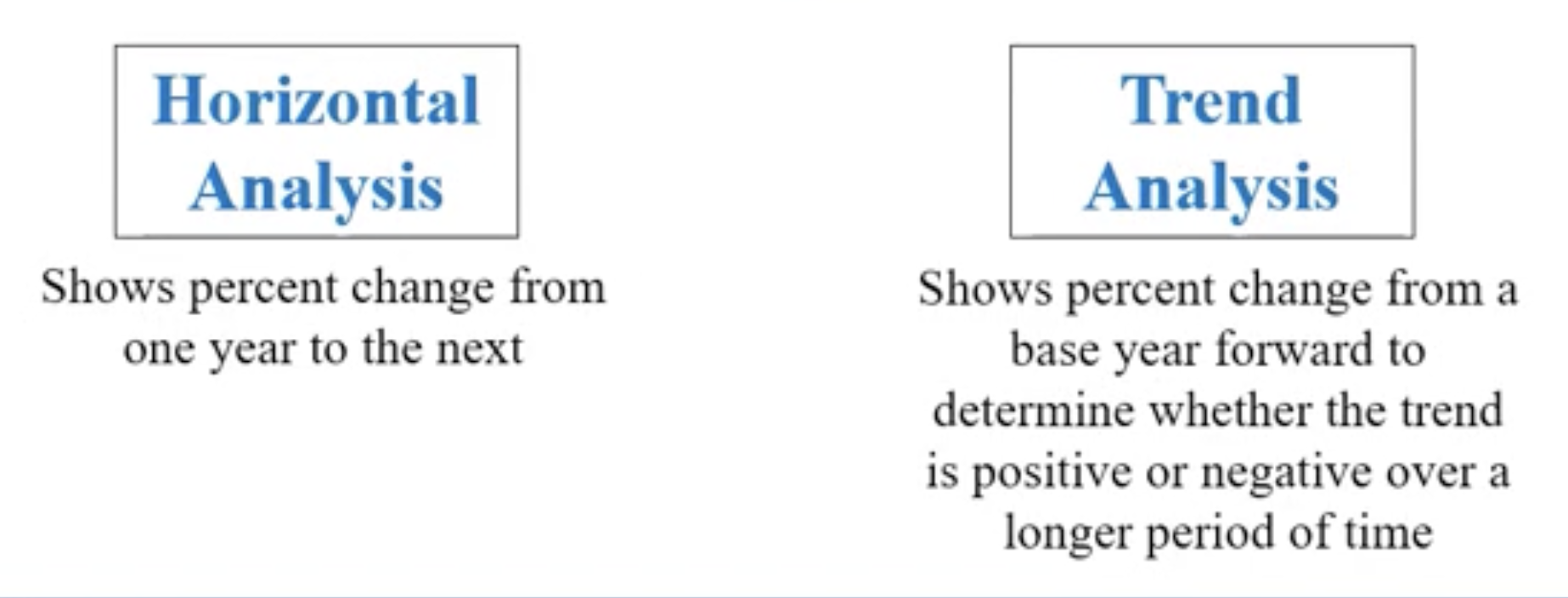
How do we use vertical analysis to analyze a business: Vertical analysis
An analysis of a financial statement that reveals the relationship of each statement item to its base amount.
Income statement = Net sales
Balance sheet = Total assets

How do we use vertical analysis to analyze a business: Common- size statement
A financial statements that reports only percentages and no dollar amounts and removes dollar value bias.
How do we use vertical analysis to analyze a business: Dollar value bias
The bias one see from comparing numbers in absolute (dollars) rather than relative (percentage) terms

How do we use vertical analysis to analyze a business: Benchmarking
The practice of comparing a company with other leading companies

How do we use vertical analysis to analyze a business: benchmarking against a key competitor
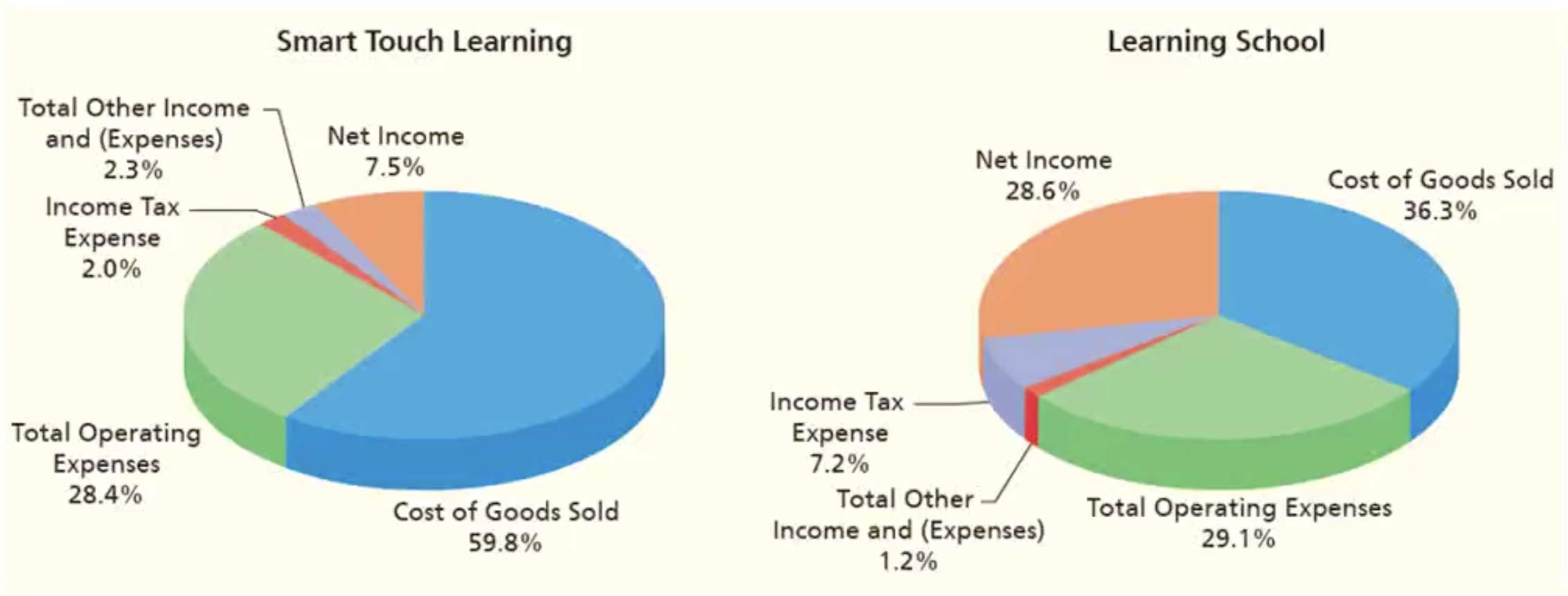
How do we use vertical analysis to analyze a business: benchmarking against the industry average
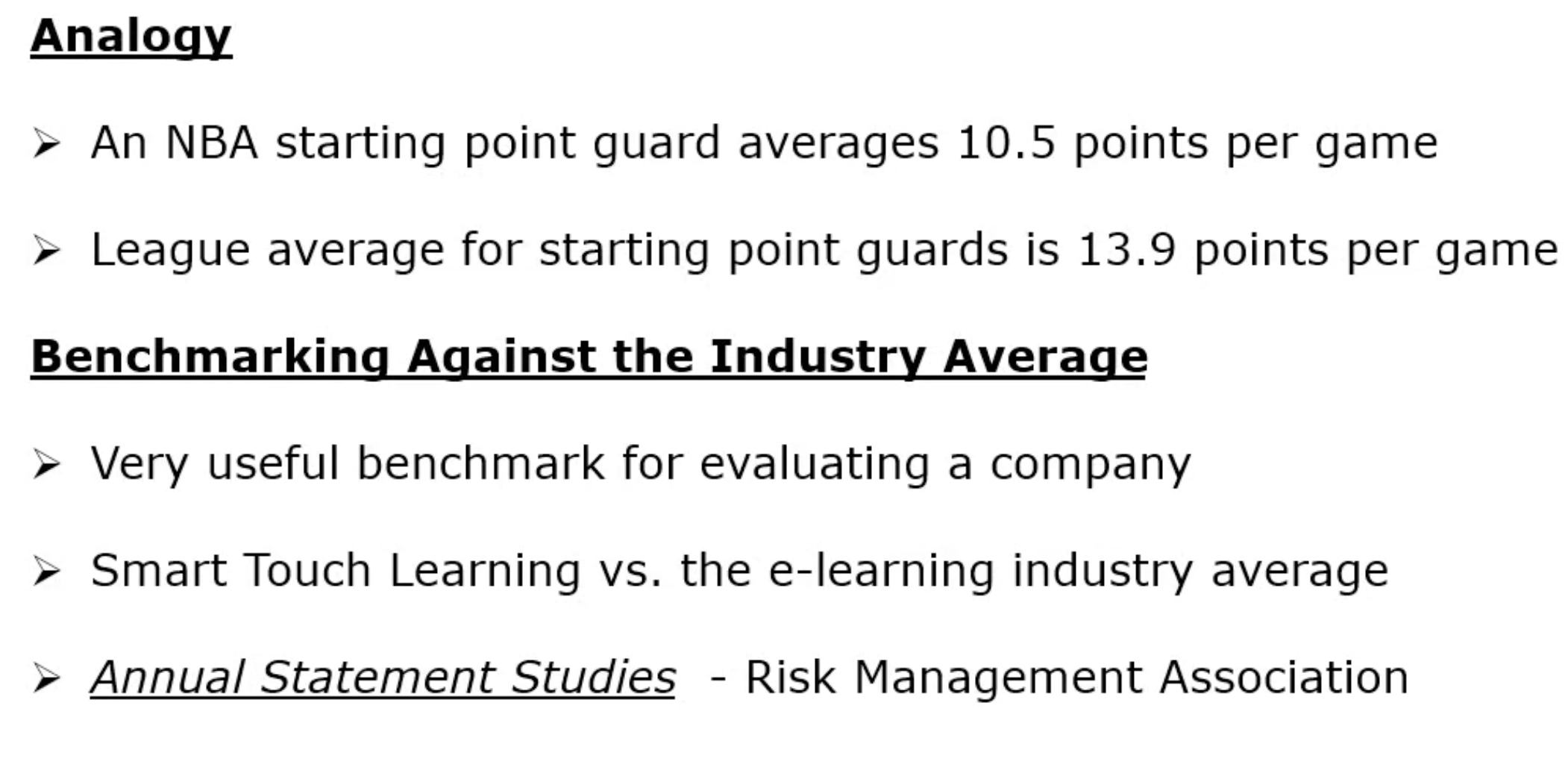
How do we use ratio to analyze a business: Classification of ratio— evaluation of

How do we use ratio to analyze a business: Working capital
a measure of a business’s ability to meet its short- term obligations with its current assets
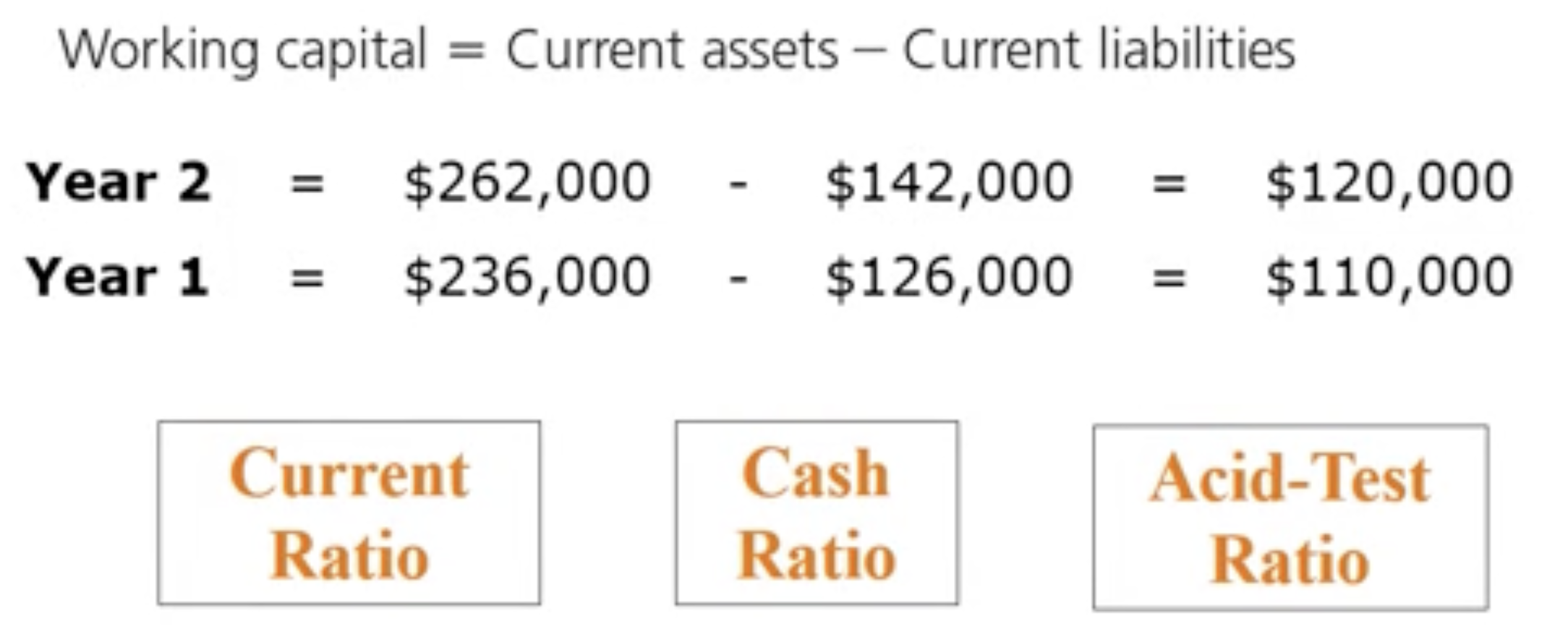
How do we use ratio to analyze a business: Cash ratio
A measure of a company’s ability to pay current liabilities from cash and cash equivalents
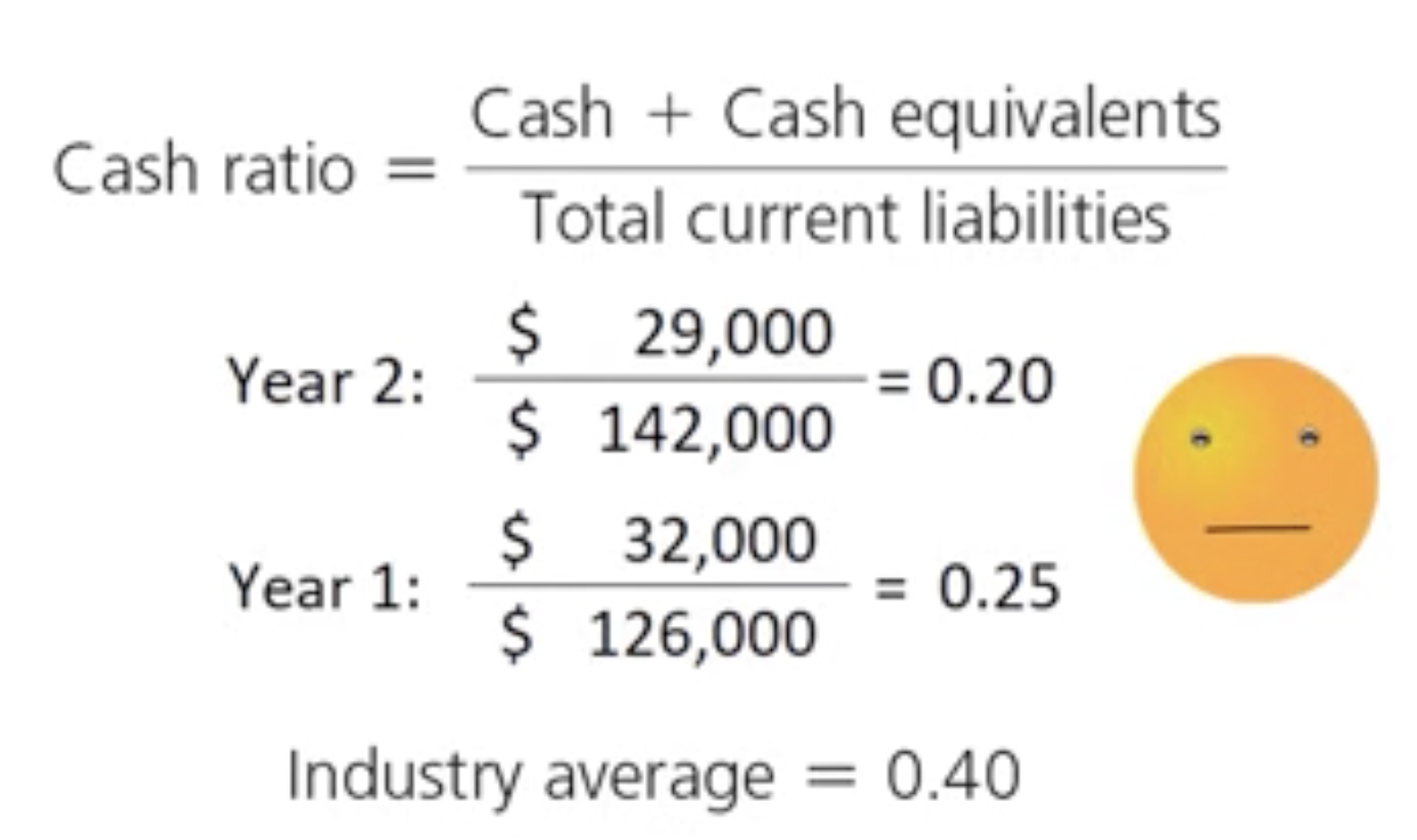
How do we use ratio to analyze a business: Acid- Test ratio
A measure of a company’s ability to pay all its current liabilities if they came due immediately
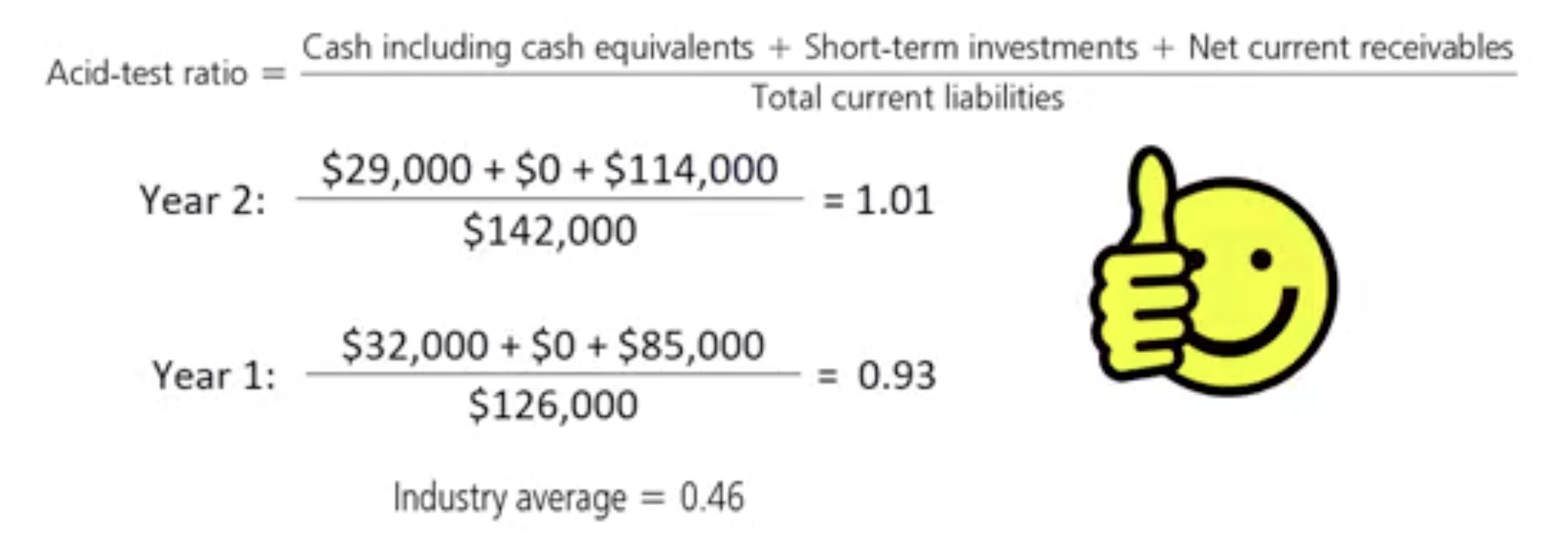
How do we use ratio to analyze a business: Current ratio
Measure the company’s ability to pay current liabilities from current assets


How do we use ratio to analyze a business: Evaluating the ability to sell merchandise inventory and collect receivables— Inventory turnover?
Measure the number of times a company sells its average level of merchandise inventory during a period
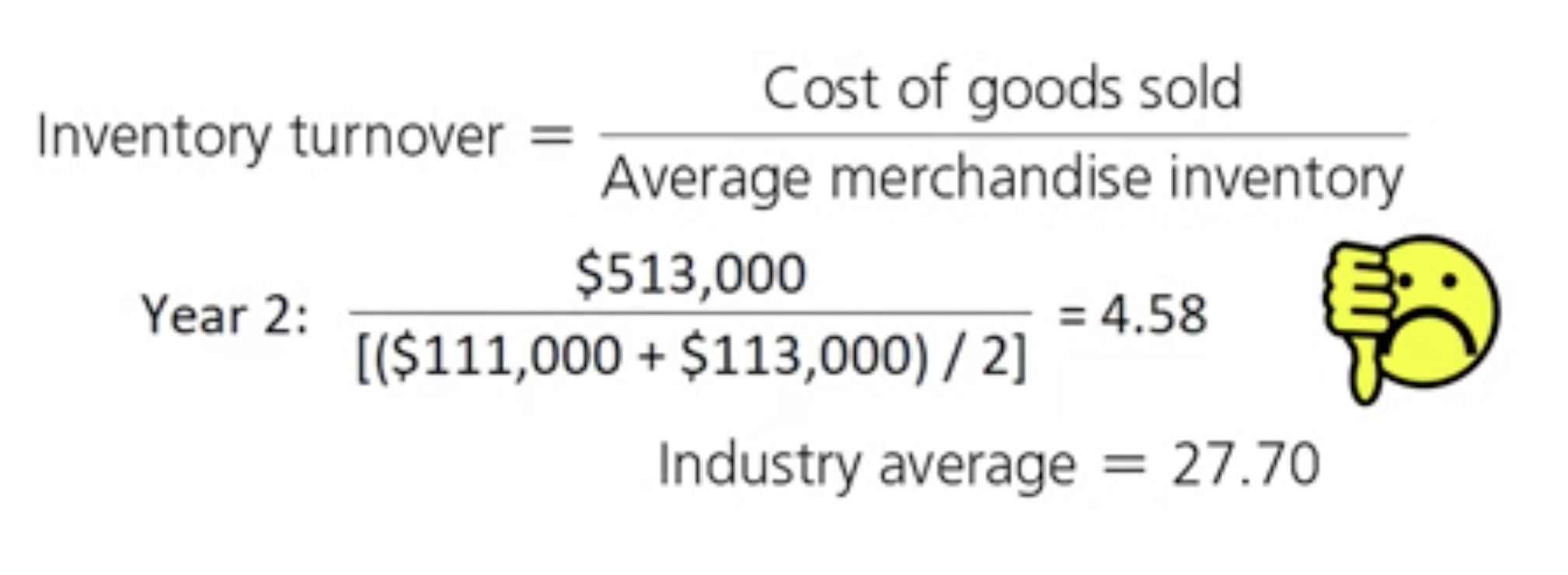
How do we use ratio to analyze a business: Days sales in inventory
Measures the average number of days that inventory is held by a company
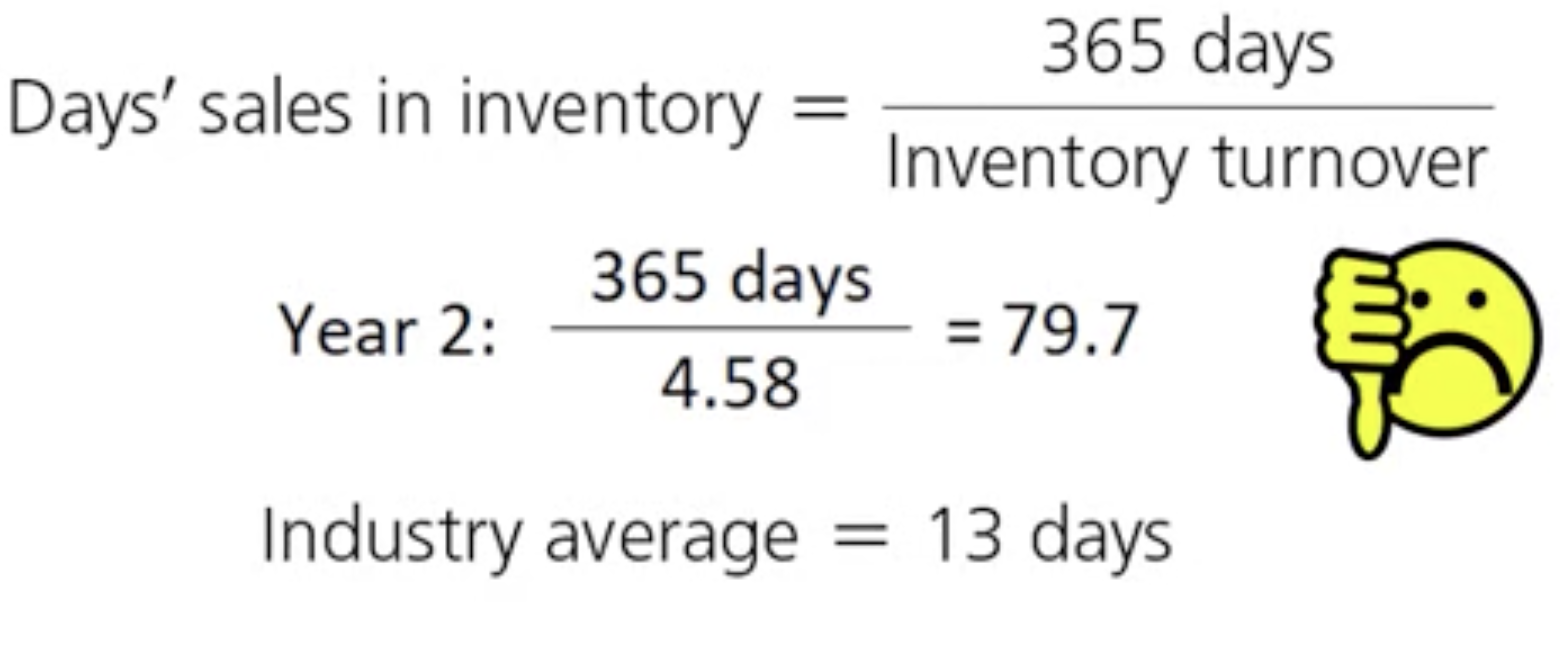

How do we use ratio to analyze a business: Gross profit percentage
Measures the profitability of each sale above the cost of goods sold
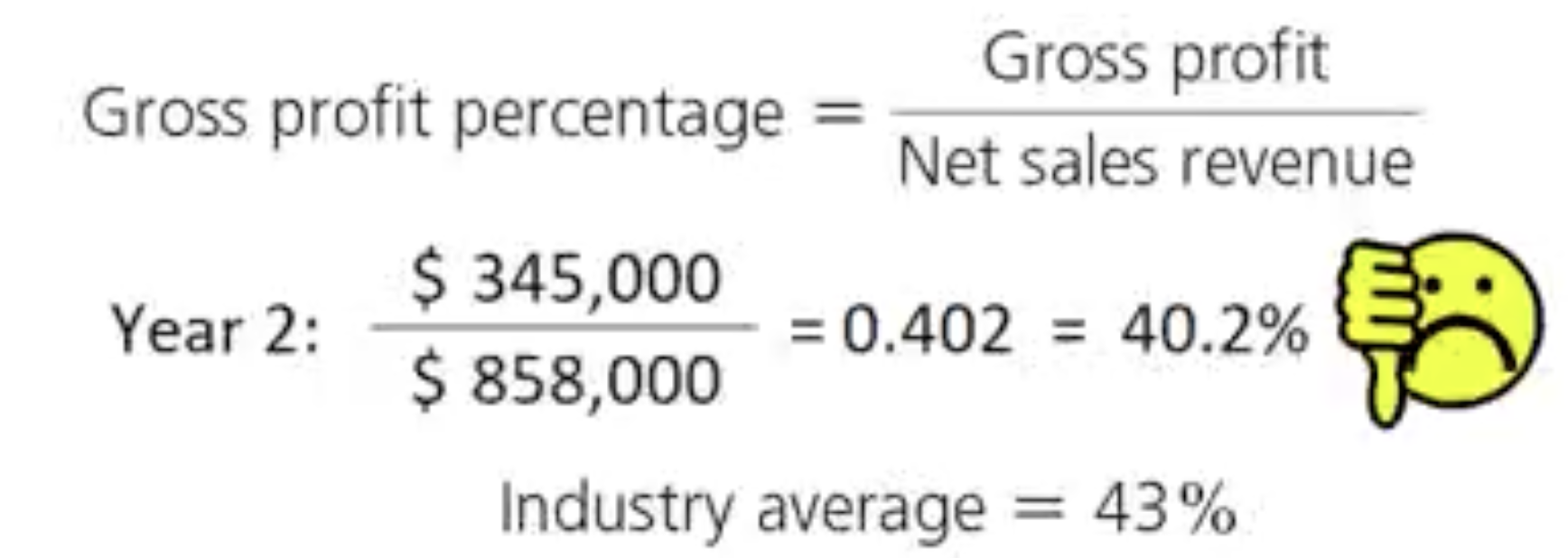

How do we use ratio to analyze a business: Accounts receivable turnover ratio
Measures the number of times the company collects the average accounts receivable balance in a year

How do we use ratio to analyze a business: Days sales in receivables
Measures how many days it takes to collect the average level of accounts receivables
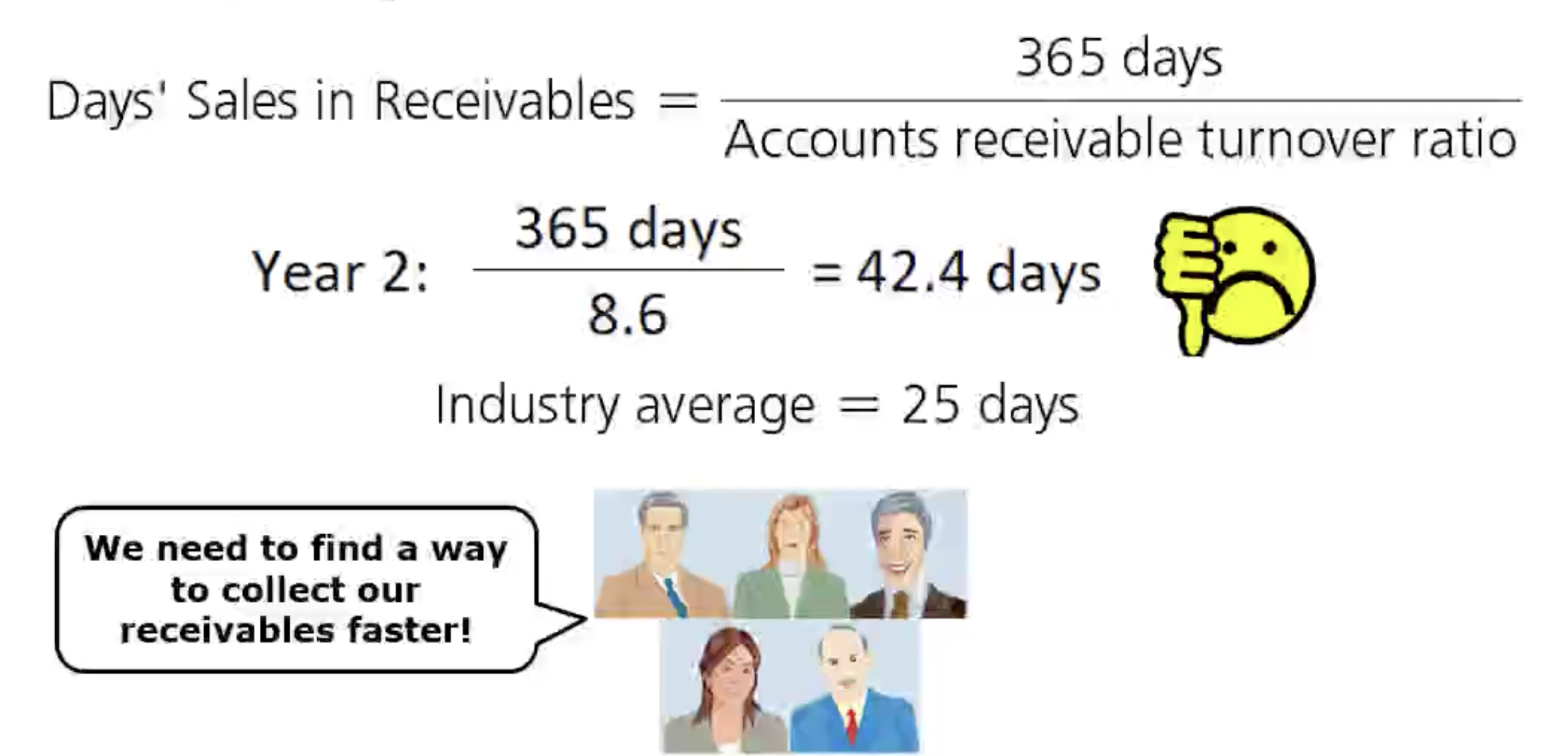
How do we use ratio to analyze a business: Evaluating the ability to pay long term debt— Debt ratio?
Shows the proportion of assets with debt
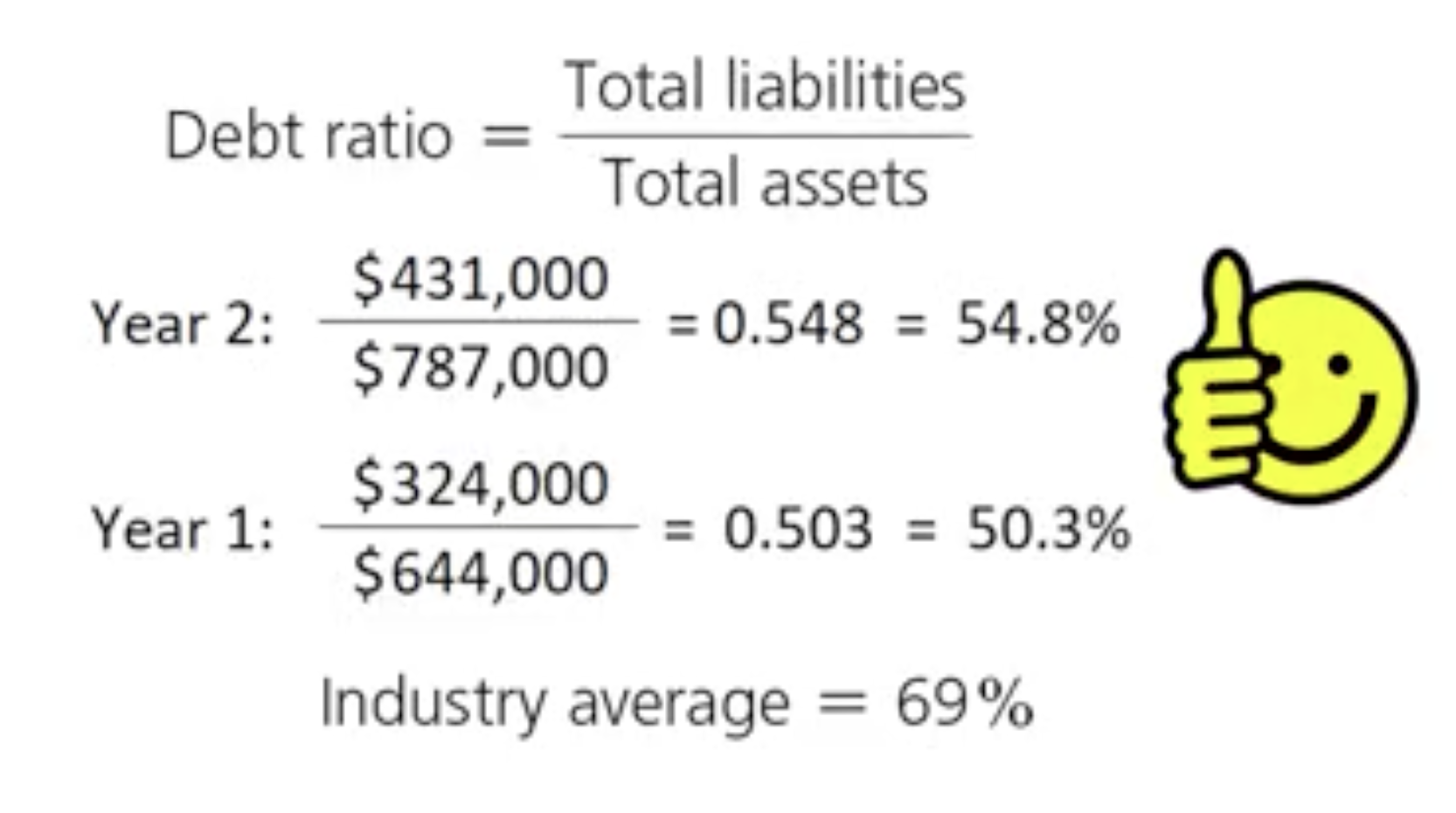
How do we use ratio to analyze a business: Dent to equity ratio
Measures the proportion of total liabilities relative to total equity
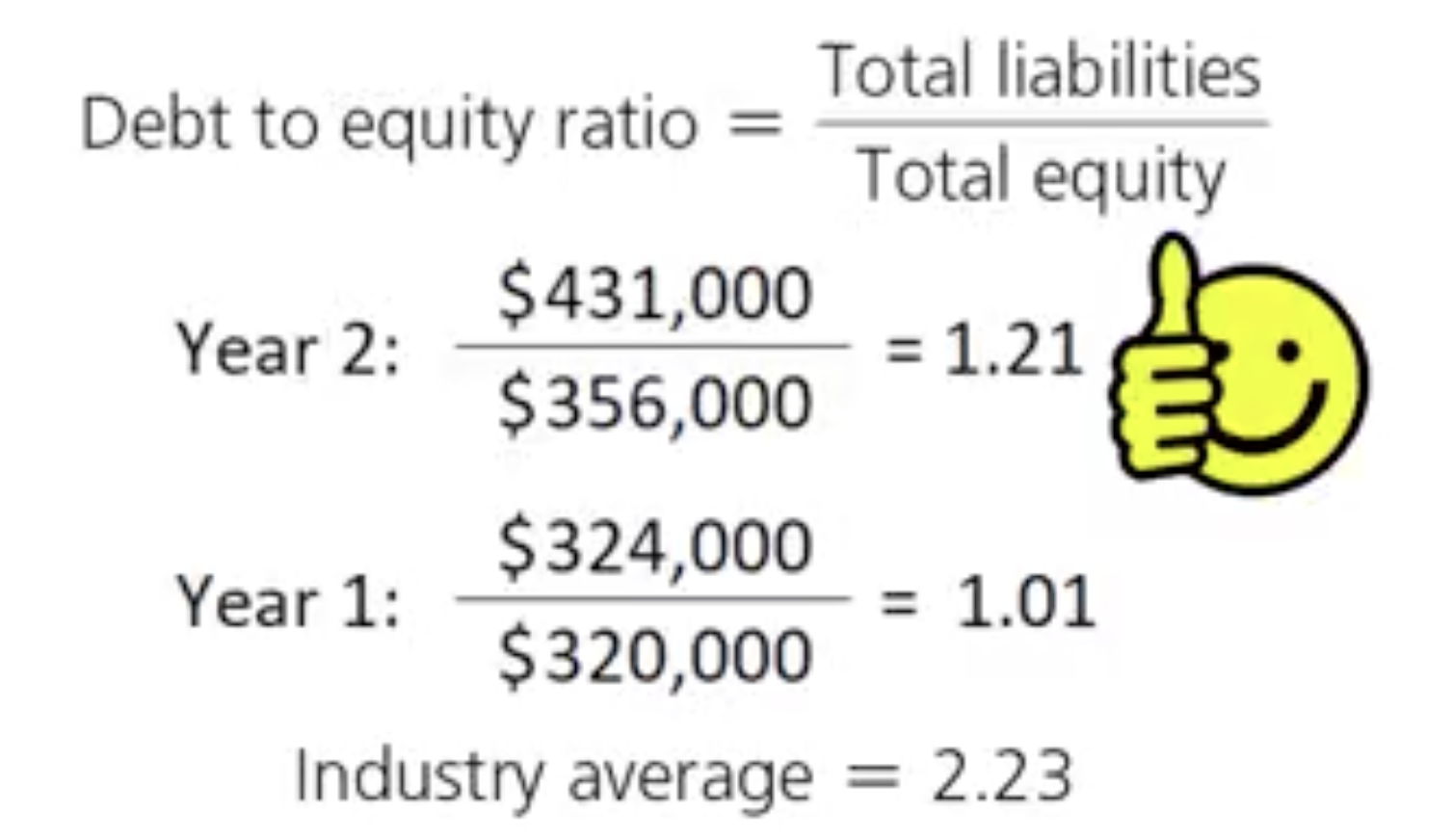
How do we use ratio to analyze a business: Times- interest- earned ratio
Evaluates a business’s ability to pay interest expense

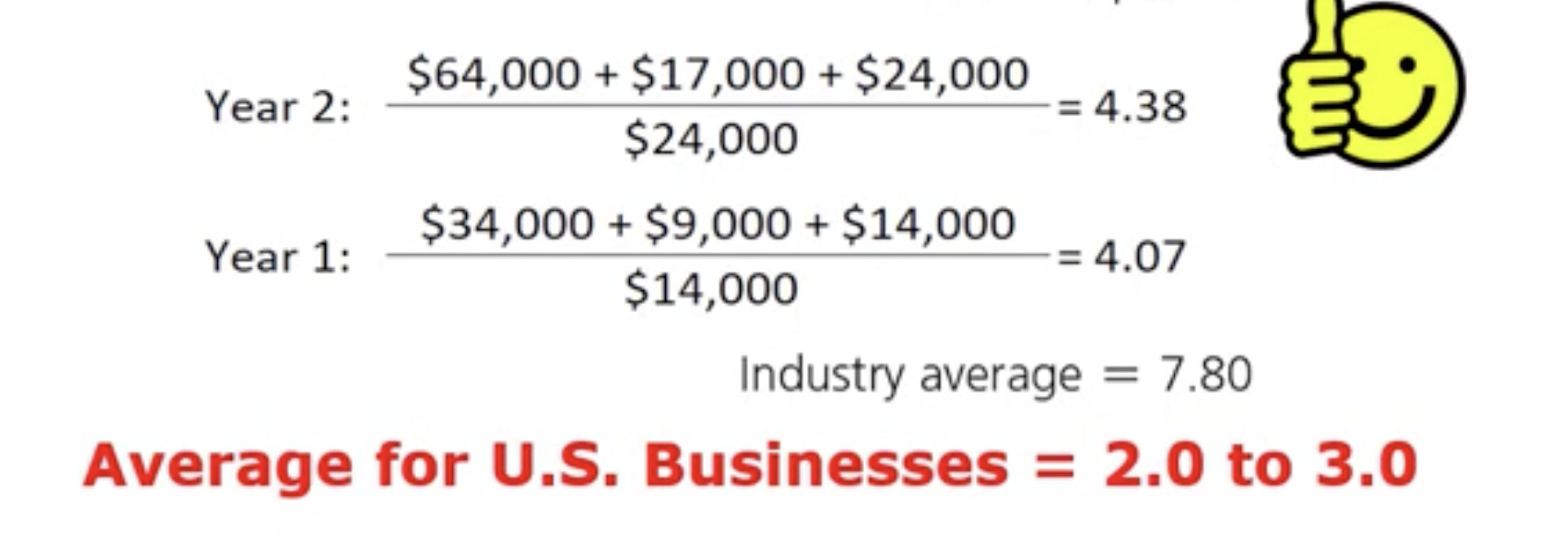
How do we use ratio to analyze a business: Evaluating Profitability— Profit Margin ratio?
A measure that shows how much net income is earned on every dollar of net sales
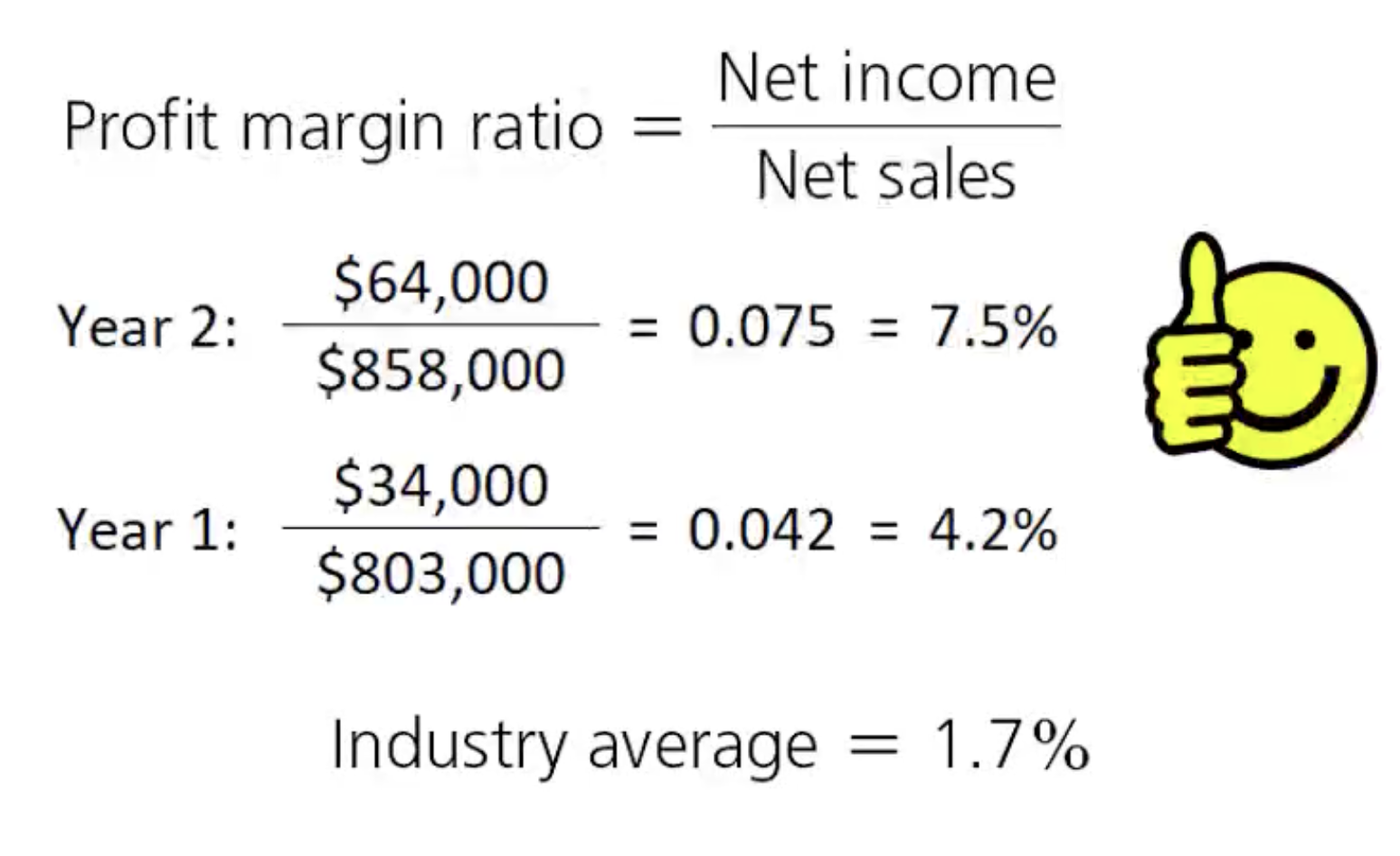
How do we use ratio to analyze a business: Rate of return on total assets
Measures the success a company has in using its assets to earn income

How do we use ratio to analyze a business: Asset turnover ratio
Measures how efficiently a business uses its average total assets to generate sales
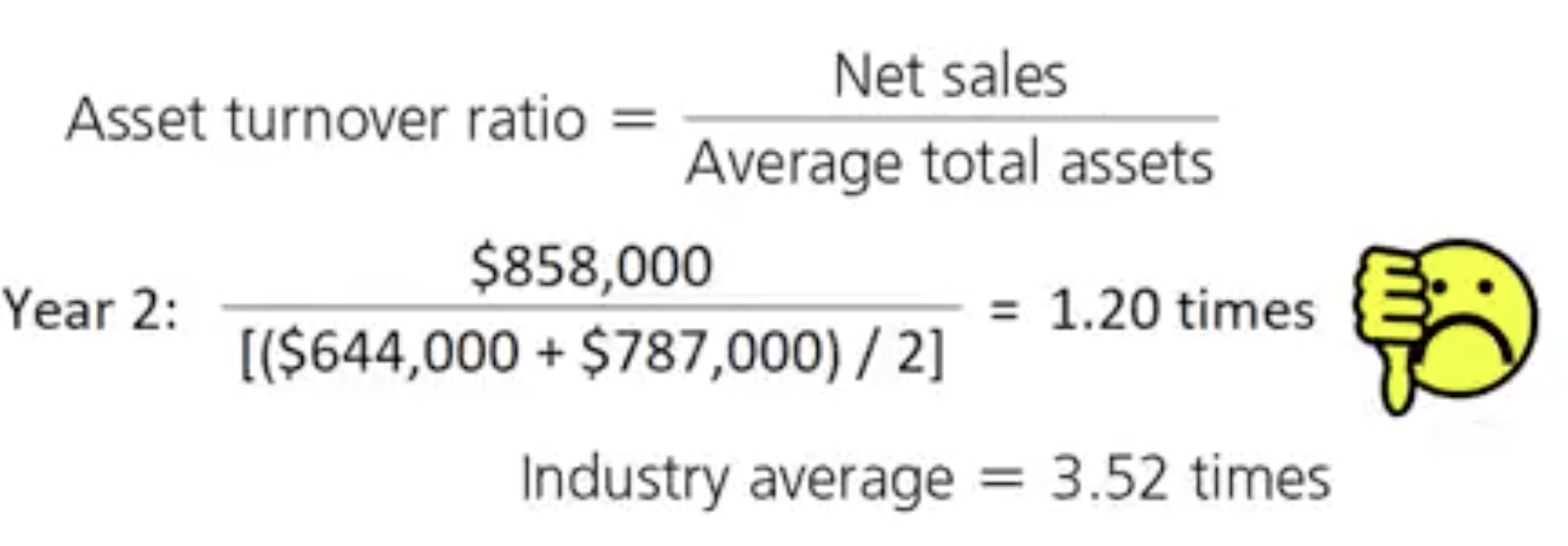
How do we use ratio to analyze a business: Rate of return on common stockholder equity
Shows the relationship between net income available to common stockholders and their average common equity invested in the company

How do we use ratio to analyze a business: Trading on the equity

How do we use ratio to analyze a business: Earnings Per Share (EPS)
Amount of a company’s net income (loss) for each share of its outstanding common stock
Only ratio that must appear on the financial statements
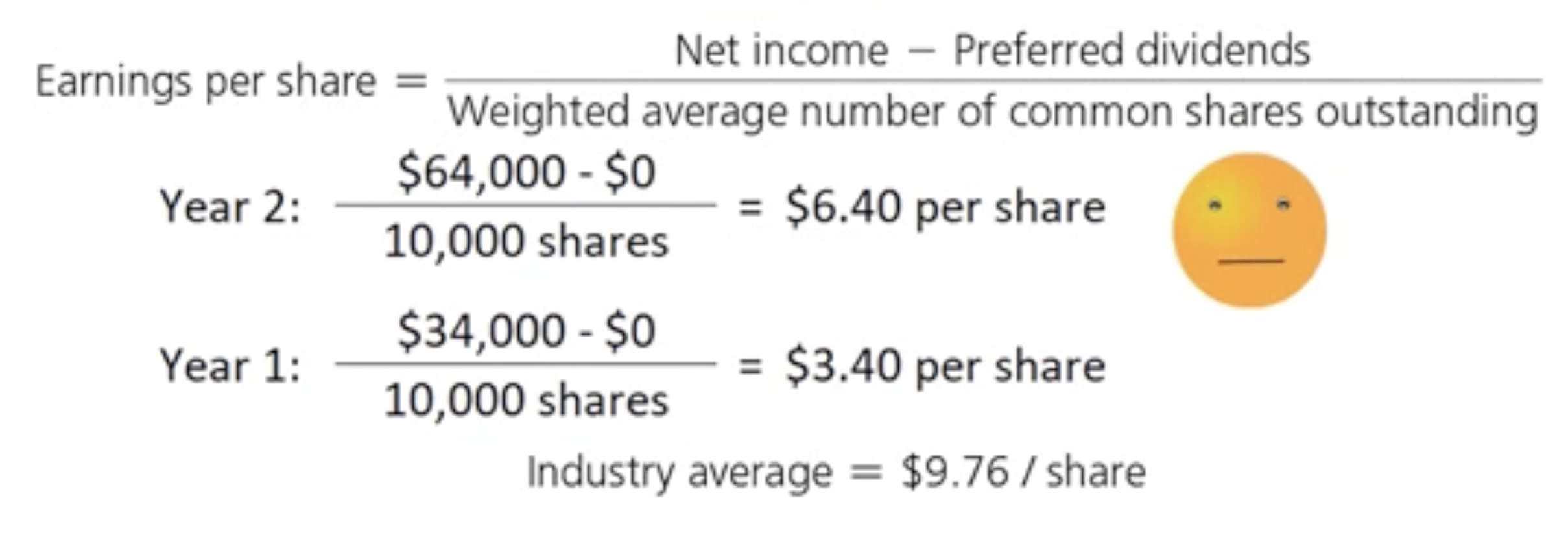
How do we use ratio to analyze a business: Evaluating stock as an investment— Price/ earnings ratio?
The ratio of the market price of a share of common stock to the company’s earnings per share
Shows the market price of $1 of earnings
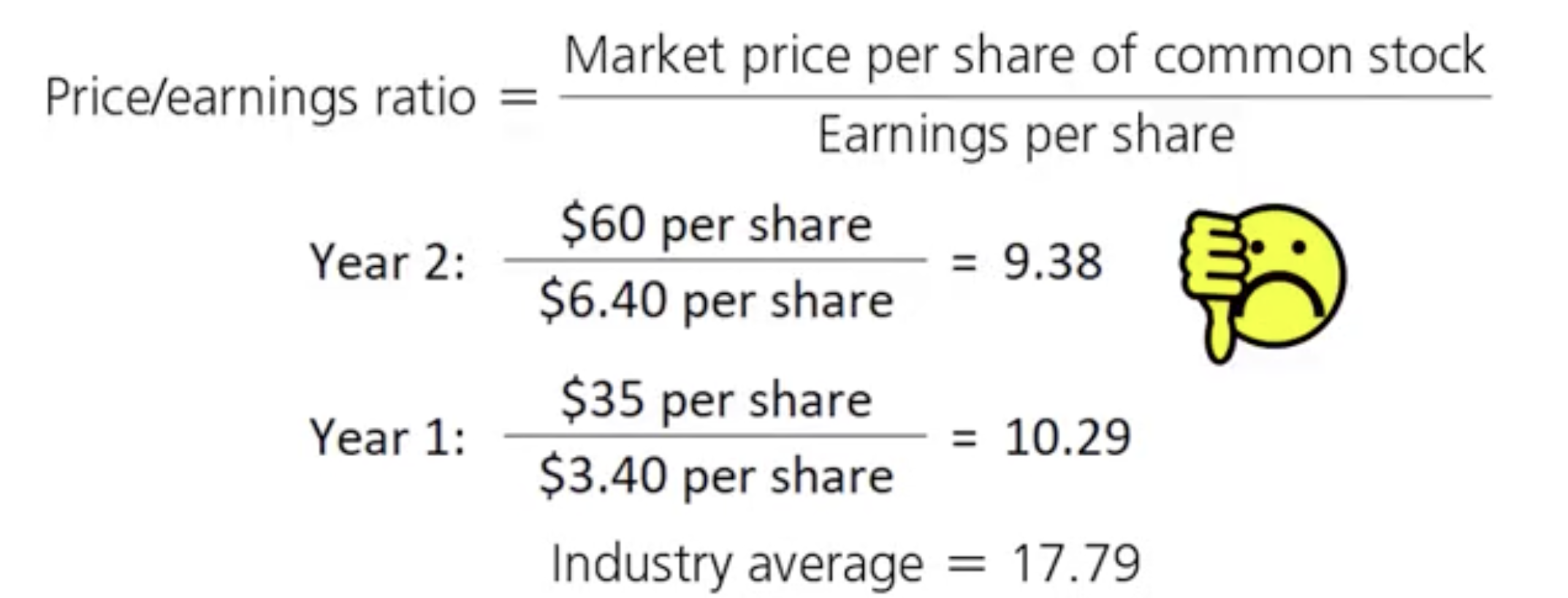
How do we use ratio to analyze a business: Dividend yield
Measures the percentage of a stock markets value that is returned annually as dividend to stockholders
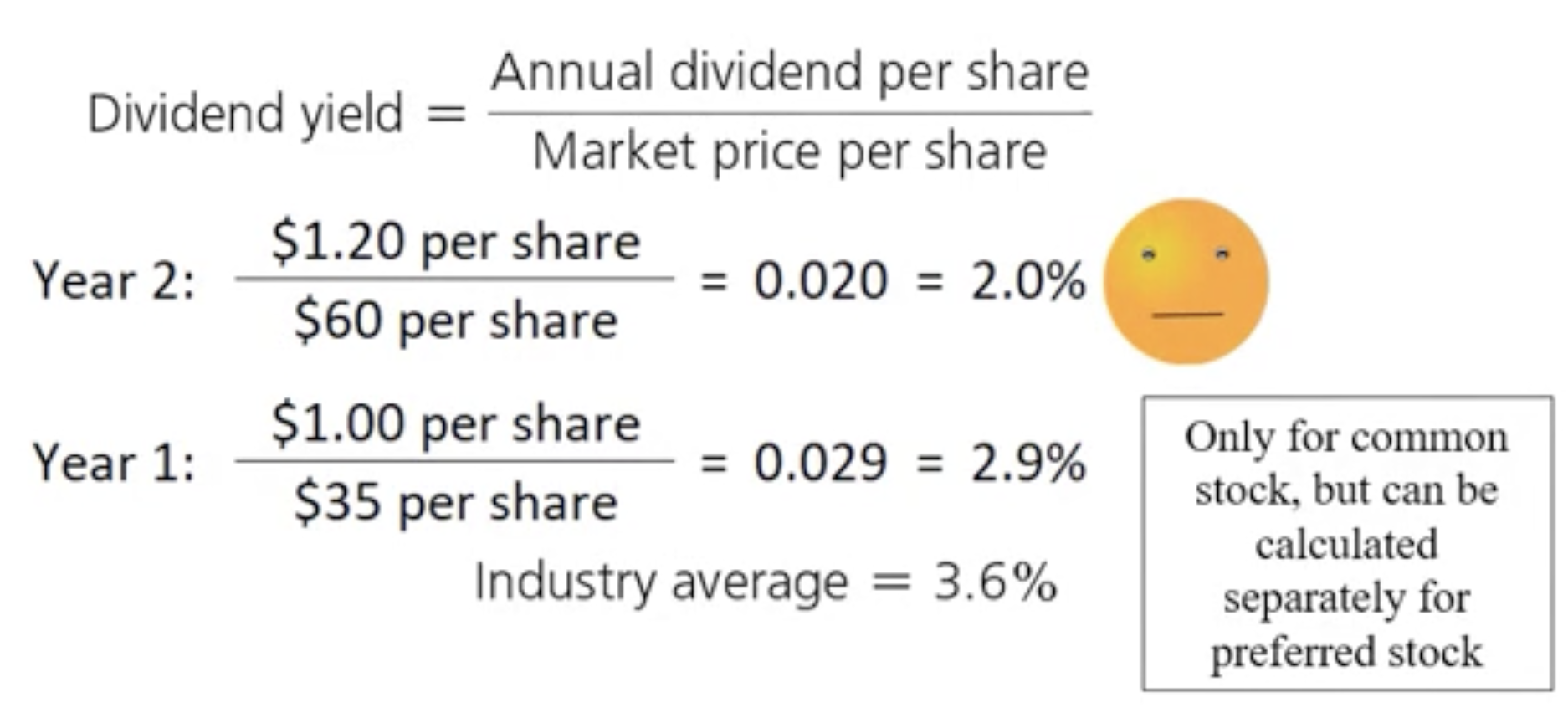
How do we use ratio to analyze a business: Dividend payout
Measures the percentage of earnings paid annually to common shareholders as cash dividends
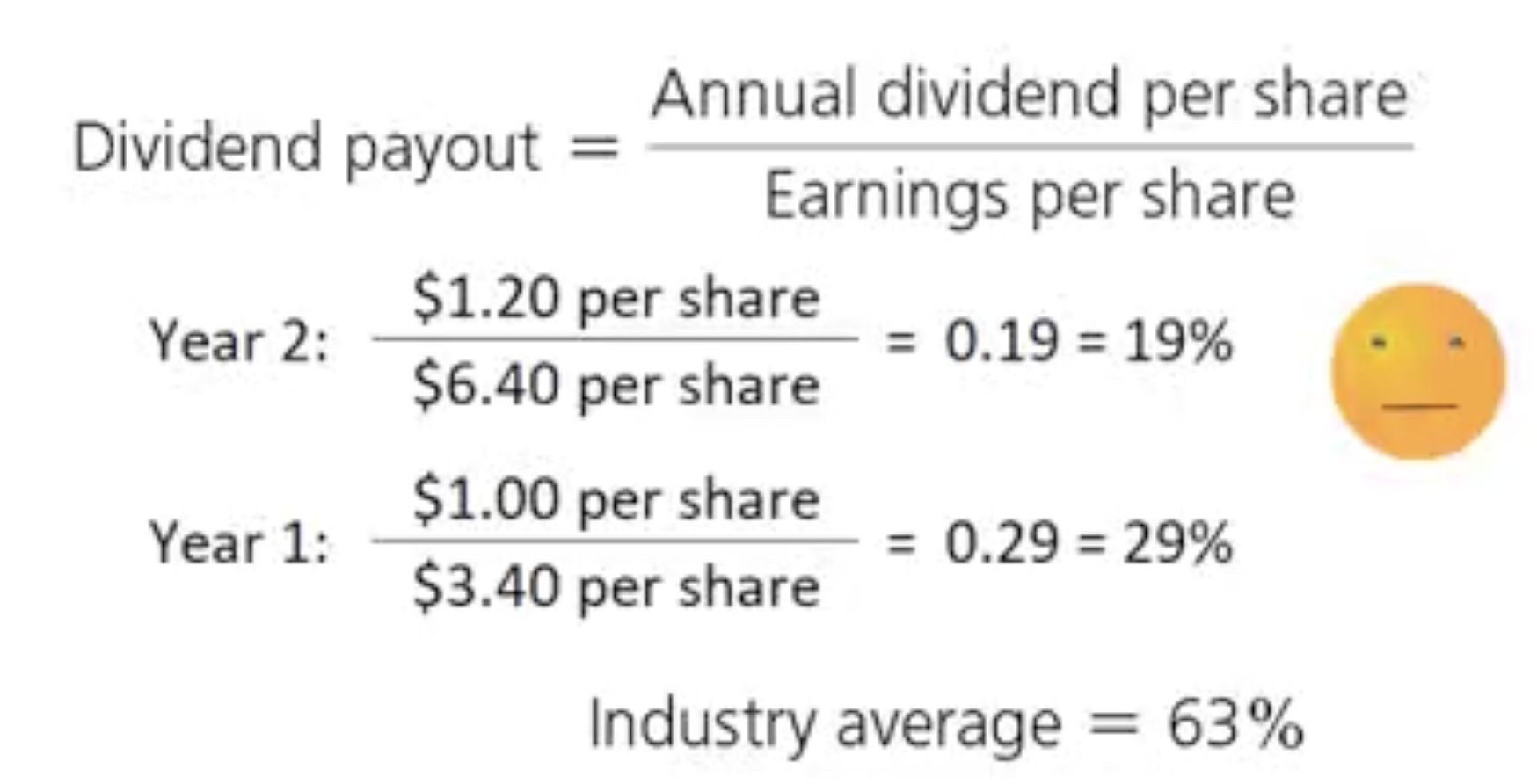
How do we use ratio to analyze a business: Red flags in financial statements analyses
